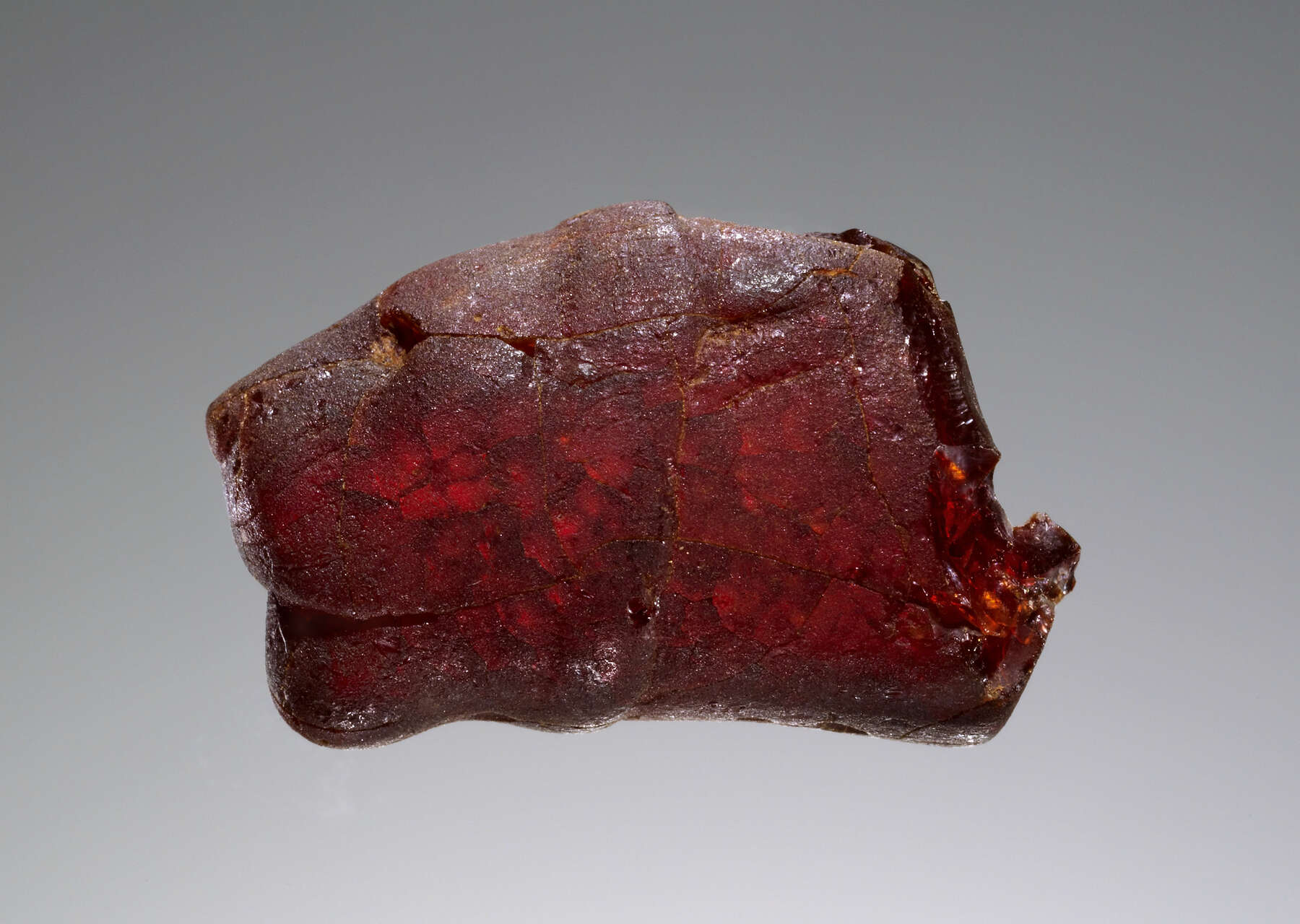35. Pendant: Lion’s Head
| Accession Number | 77.AO.81.9 |
| Culture | Etruscan |
| Date | 525–480 B.C. |
| Dimensions | Height: 9 mm; width: 17 mm; depth: 9 mm; Weight: 1.3 g |
| Subjects | Lion |
Provenance
–1977, Gordon McLendon (Dallas, TX), donated to the J. Paul Getty Museum, 1977.
Condition
The lion’s head is intact and in excellent condition; the surface is smooth and firm. There are only a few small chips, on the throat area and on the back of the mane. Pale yellow mottling covers much of the surface. Pale yellow-ocher patina (degraded amber) surrounds the eyes and lies in other crevices. The amber is dark brownish red in ambient light. In transmitted light, it is translucent and bright reddish orange. One long inclusion runs the length of the head.
Description
In form and profile views, the narrowness and flatness of this head are striking. The height is proportionally low in comparison to its width and length. From the dorsal view, presumably the main view when the pendant was suspended, the impression of a compressed composition disappears. In fact, it reads very much like that of the head of (cat. no. 36), which is three-dimensional.
From its general structure to the details of the eyes, mane, and chin, the head is a combination of flattened and plastically modeled forms. Engraved lines mark the mouth, the muzzle wrinkles, the circumscription of the eyes, the eyebrows, and the fillet at the back. The slanted-back eyes, of an almost rectangular form, are deeply carved, leaving the eyeballs protruding above the cheek plane. The folded-over ears, of triangular shape with soft points, arise from the back of the mane. The snout is smooth and softly curved, stepping down to the tip of the nose, which tilts upward. The nose-to-chin line is even and tapers in slightly. The nostrils are drilled.
The muzzle itself is flat and wrinkled, with five folds of flesh that are rendered by uneven diagonal grooves radiating from the mouth rather than from the philtrum. Three ruffled bulges break the line of the mouth on the sides. The underside of the jaw and throat area is flat. The mane is schematically rendered as a smooth collar. At the back termination are two parallel grooved lines.
Patterns of tiny scratches caused by abrasion are visible on the back of the piece. Two holes 1 mm in diameter are bored into the base, originating near the outer edge, sloping downward and inward toward the center. A pair of 1.5 mm–diameter perforations is drilled under the throat area: one bore originates below the right ear, and a second begins below the left corner of the jaw. These latter perforations might have been secondary to those on the base. When suspended by the base borings, the lion would have hung nose downward. If it had been suspended from the cross-bore through the head, it would have hung nose upward.
Discussion
The pose of the head and neck encodes a mixture of lion behaviors: repose is implied both by the closed mouth and by the relaxed eyes; the inclination of the head suggests motion; and the position of the ears, which lie flat against the head, signals a display of anger.
Although related in style to the following head (), especially in dorsal view, this lion differs in small physiognomic details from other representations in amber and other media. Distinguishing features of this head are the flatness of the pendant, the flat collar of mane devoid of fur markings, the muzzle wrinkles, and the ruffled upper lip. According to W. L. Brown, the last might be considered a regressive trait in lion representation of the period.1 There appears to be no other example of an amber pendant perforated in this manner. The only parallel for such a system known to me is an Elamite lapis lazuli bull’s head from Susa.2 On that head, when the cross-bore in the head section is connected to the base set, the resulting holes make an anchored suspension loop.
Notes
Bibliography
- Brown 1960
- Brown, W. L. The Etruscan Lion. Oxford, 1960.

